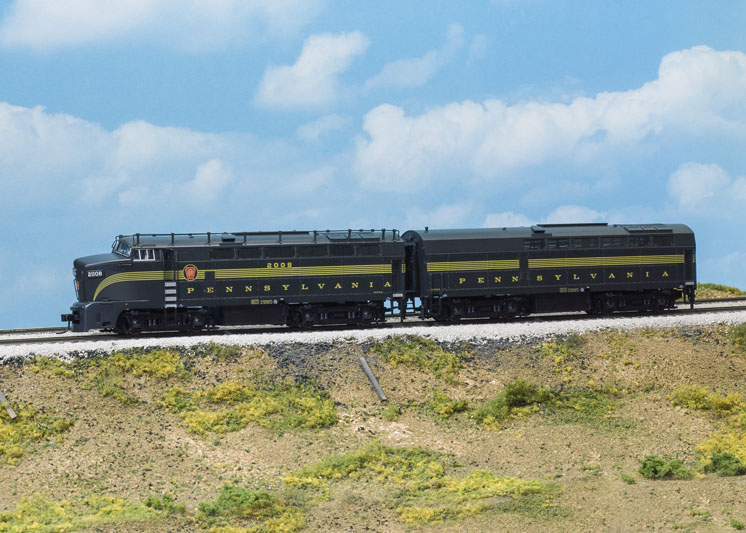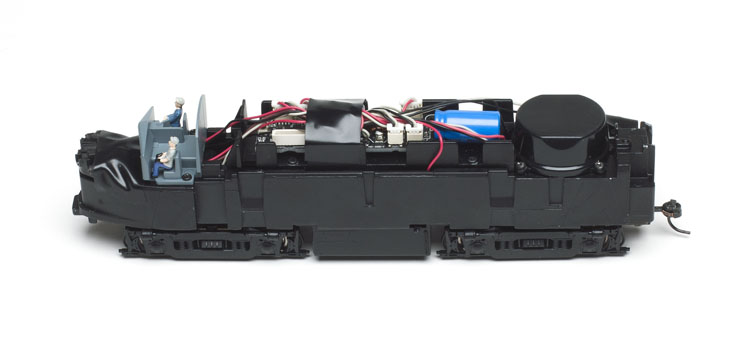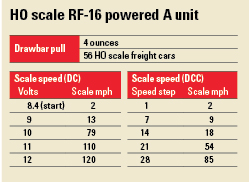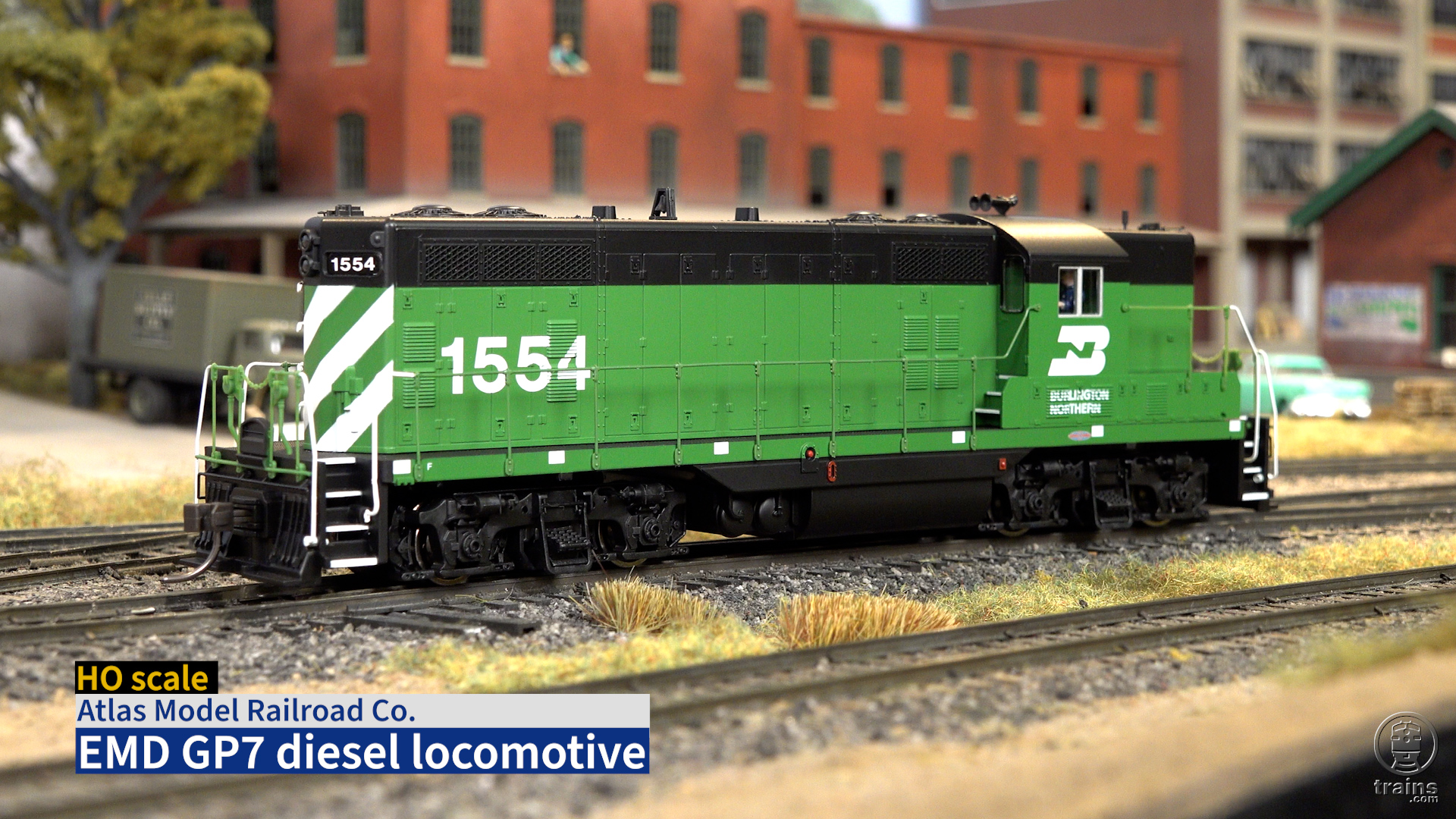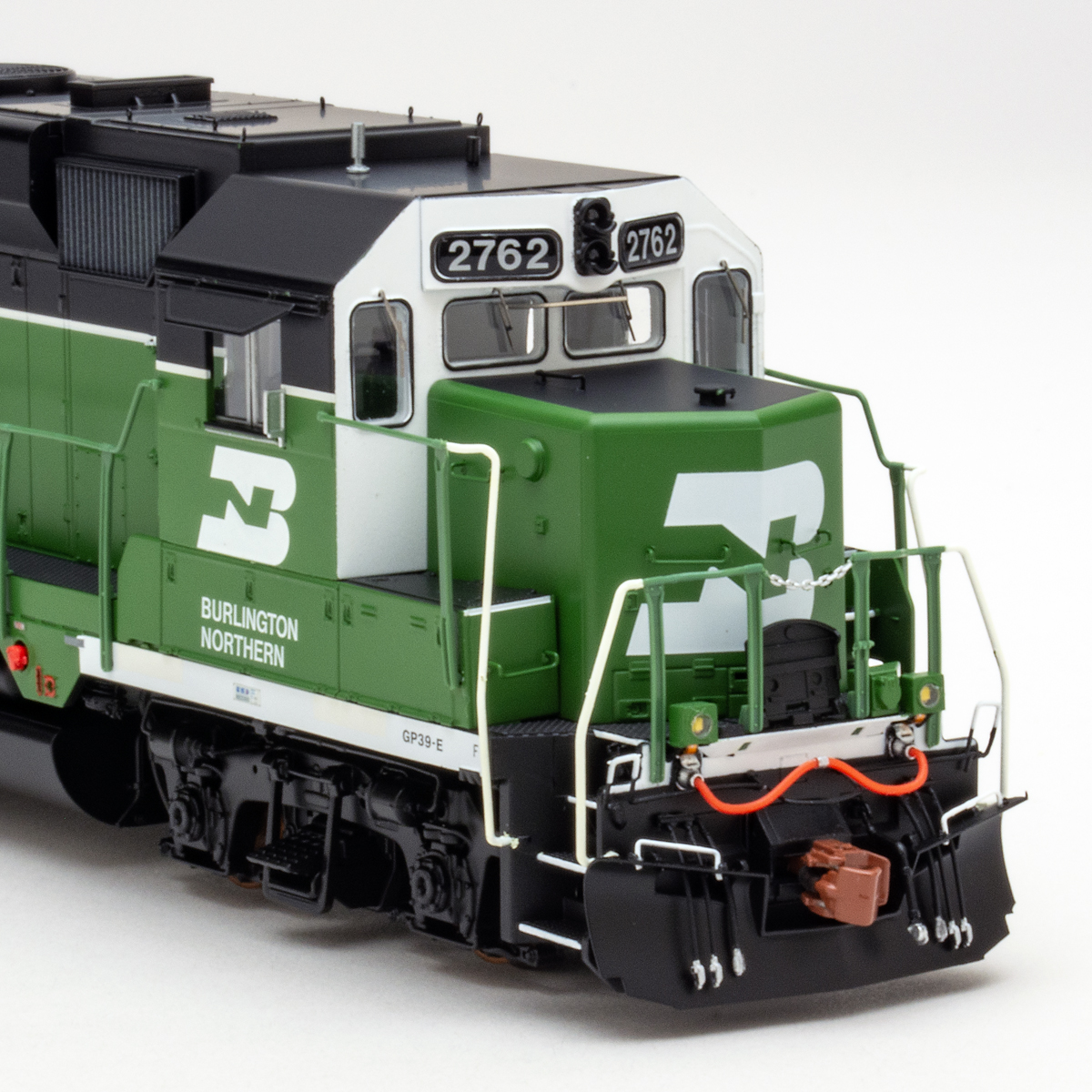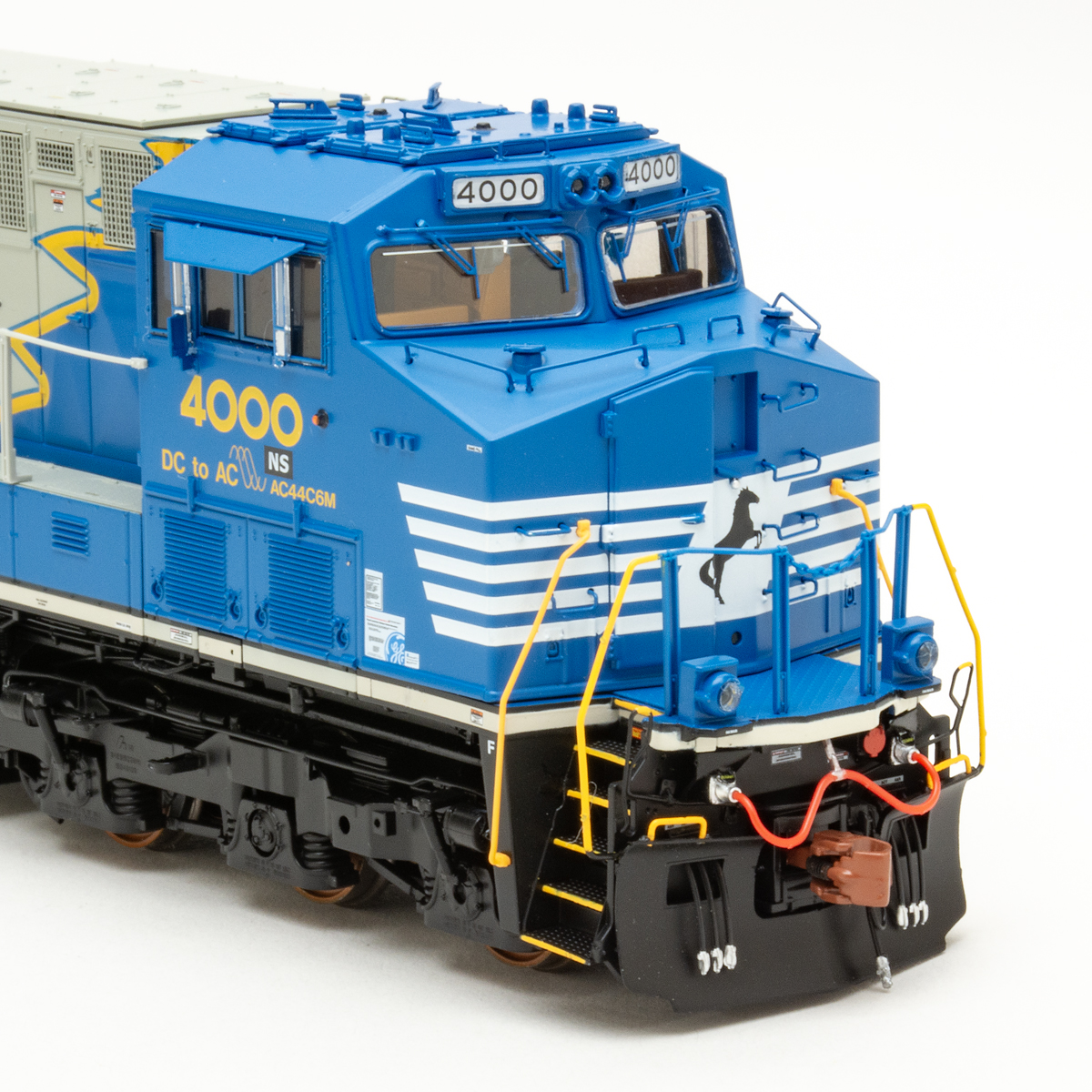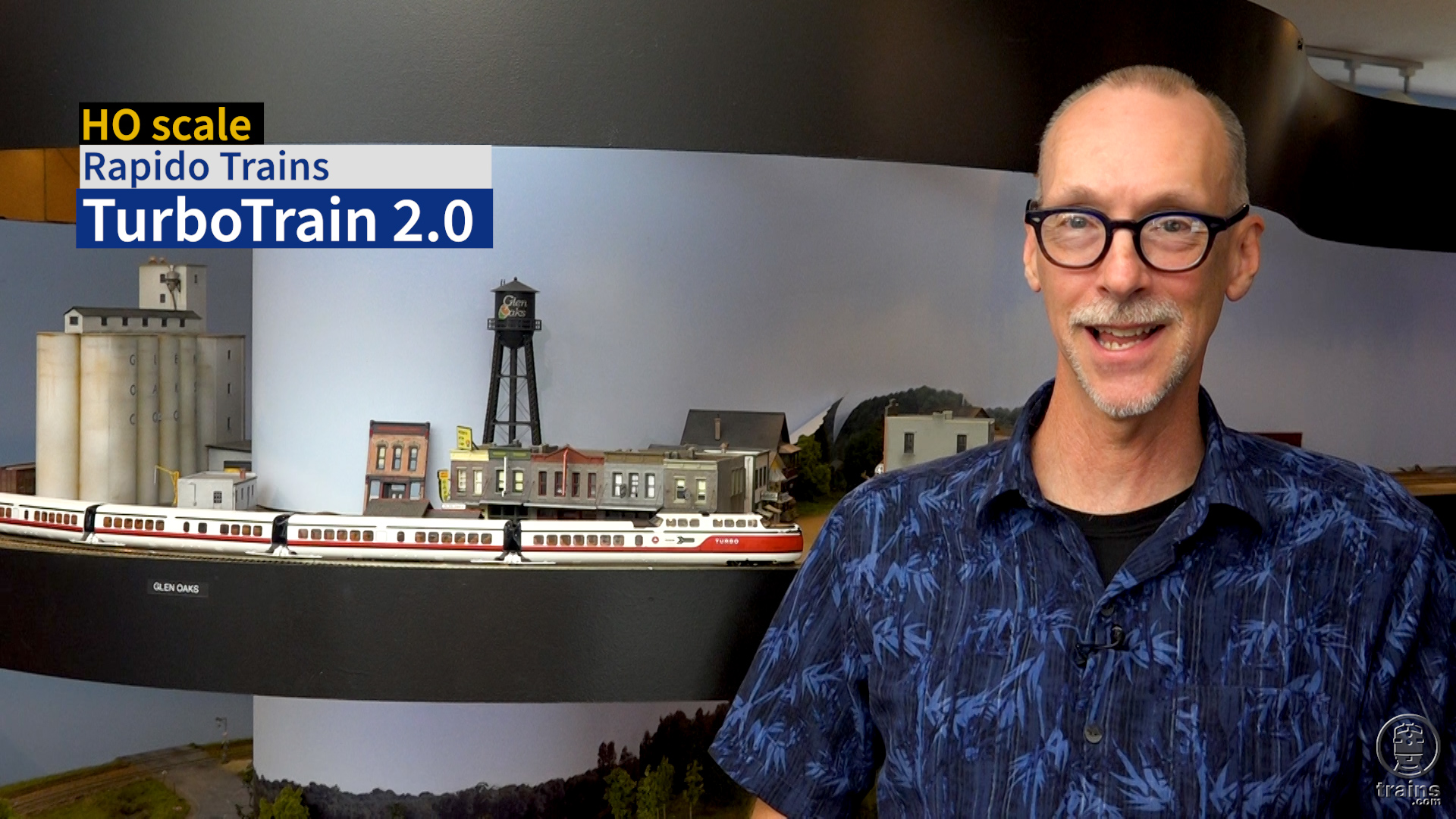With their angled noses and canted sides, these locomotives aren’t your typical cab units. Broadway Limited Imports’ new Baldwin RF-16 Sharks cut a different path in the locomotive pool.
Thanks to the company’s Paragon2 sound decoder, the rumble of Baldwin’s 608A turbocharged 1,600-horsepower 8 cylinder engine emanates from the open mesh air intakes. From the separately applied handrails and grab irons to the Pennsylvania RR-specific train-phone antenna on the roof, BLI’s HO models capture the looks and sounds of these distinctive locomotives.
The prototype. Baldwin Sharks came in three varieties. The first were model DR-6-4-2000, known as passenger Sharks. These six-axle locomotives were followed by the DR-4-4-1500. Both were restyled from Baldwin’s “baby face” look for the Pennsylvania RR by industrial designer Raymond Loewy.
The DR-4-4-1500s weren’t without their problems, and by the time Baldwin refined them, they became model RF-16, which is the locomotive reproduced here in both cab, or A-unit, and booster, or B-unit, configurations.
RF-16s differ from early production DR-4-4-1500s, featuring panel air filters with mesh grills instead of louvers on the air intakes, a sill that maintains the thickness of the protruding pilot down the side of the locomotive, and other changes.
From 1950-53, Baldwin built 160 RF-16 Sharks. Original owners were the Baltimore & Ohio, which got the first and last units, the PRR, and the New York Central. All three railroads purged the engines from their rosters by the mid-1960s, but in the winter of 1967, the Monongahela Ry. purchased seven ex-NYC cabs and two boosters from General Electric.
Two of Monongahela’s cab units, nos. 1205 and 1216, were bought in mid-1974 by the Delaware & Hudson Ry., where they worked until 1977. These locomotives eventually made their way to Michigan, with no. 1216 used as late as Nov. 9, 1982, on the Escanaba & Lake Superior.
The model. Broadway Limited Imports’ RF-16 matches drawings in the Model Railroader Cyclopedia, Vol. 2: Diesel Locomotives (Kalmbach Publishing Co., out of print). The two-unit sets include a powered cab unit and an unpowered booster. The set coupled 6 scale inches farther apart than the prototype, which allows it to negotiate 18″-radius curves.
Our samples were decorated for the Pennsylvania RR in the as-delivered five-stripe paint scheme. The BLI cab-booster set is connected by a hook-style drawbar assembly. Broadway Limited includes knuckle couplers and coupler boxes for modelers who wish to operate the cab units alone.
Exchanging the drawbars for couplers is a bit involved. Other than an exploded-view diagram, there are no instructions for doing this. The plastic body shell must be removed from the frame so the drawbar/coupler assembly can be removed.
To start, I removed the front coupler, then pried one side of the shell away from the frame and inserted a pair of toothpicks. Then I pried the other side away and lifted the body shell off of the frame.
There are four small screws on the bottom of the frame that hold the coupler assembly on. Two are clearly visible from the bottom of the model. The other two are partially hidden under the rear truck, but turning the truck side to side gave me enough access to remove the screws.
Now you can remove the assembly, which includes a metal plate that helps keep the mounting bar for the coupler or drawbar in place. It has a spring that allows some side-to-side motion when the locomotive is going through a curve.
Remove the drawbar from the mount with the top-mounted screw. It’s a little difficult to reach as the mounting bar curves above the screw somewhat. The replacement coupler and its plastic draft-gear box are held in place with a different, longer screw with a larger head on it.
Re-assembly is fiddly too. I lined up all the parts, then installed the easy-to-see screws first, but didn’t tighten them. This allowed me to realign the bar that holds the sprung coupler mount in place while
I fished the screw past the truck and into the hole. Once all the screws were started, I checked the alignment, then tightened everything. Mounting a coupler in the unpowered booster locomotive is similar, but all of the screws are accessed from above, making it a little simpler.
Mounted to the cab unit’s die-cast metal frame is the five-pole, skew-wound motor and flywheels. Above the motor is the Paragon2 dual-mode sound decoder. A downward-facing speaker is mounted at the rear of the unit. At the front is a molded cab interior with painted engineer and fireman figures.
The unpowered booster, which weighs 8.6 ounces, has a formed sheet metal frame. The trucks have wipers, so adding a sound-only decoder is possible.
The paint and markings on the PRR model are first-rate. The railroad’s Dark-Green Locomotive Enamel appears reasonably close to photographs of this often-argued-over color, and the five pinstripes line up well, although there is a gap where the stripes enter the recess for the cab doors. Small markings include trust plates on the sills above the fuel tanks next to the builder’s plates. The markings on the pilot indicate road number 2008 was assigned to the Lake Division and serviced at the Crestline, Ohio, enginehouse.
On the test track. I tested the BLI Shark on direct-current (DC) first. Using a Model Rectifier Corp. Tech4 MRC200 powerpack, sound started at 6.3V. The locomotive started moving at 8.4V at 2.3 scale mph. At 12V, the Shark was humming along at 120 scale mph. Lowering the start voltage with a BLI DC Master Analog Control Module (available separately for $49.99) would improve these numbers.
In DC, the engine notched up before the locomotive started to move, then notched up again as the speed and voltage increased. A quick reduction in voltage triggered a brake squeal. Horns and bells and other function and programming options aren’t available in DC without a BLI DC Master.
The headlight and backup light both illuminate dimly when power is first applied. When the locomotive moves forward, the headlight brightens and the backup light goes out. In reverse, the headlight remains dim while the backup light brightens. If I was careful, sound remained steady as I brought the engine to a stop and switched direction.
The model also has illuminated red marker lights front and rear that are always on in DC. Function 7 in Digital Command Control (DCC) turns them on and off. The number boards are also constantly illuminated.
In DCC, lights came on when the locomotive was placed on the track. Turning the throttle on the MRC Prodigy Advance2 cab brought the engine sounds to life at idle, then notched up to start moving. If you want to hear the startup sequence in DCC, press function button 9. The same function button triggers a shutdown sequence if the sounds are operating.
I had no trouble changing the default address of 3 to the cab number using the MRC DCC system’s programming on the main feature. I also added a bit of momentum, using CVs 3 and 4. This helps simulate the momentum of a heavy train, just what Baldwin Sharks were most often tasked with pulling.
The BLI Sharknose started moving in speed step 1 at 2 scale mph, and topped out at 85 scale mph in speed step 28, just a little faster than that of the highest gearing offered on the prototype. With its hefty 1-pound-plus weight, the RF-16 exerted 4 ounces of force on our test meter, equivalent to 56 free-rolling freight cars on straight and level track. Baldwin marketed these locomotives as “hauling fools,” and BLI’s model follows suit.
To see how this stacked up in the real world, I took the locomotive to Model Railroader’s club layout, the Milwaukee, Racine & Troy. With judicious use of the throttle, the RF-16 pulled eight cars plus its unpowered B unit up the 3 percent grade out of Bay Junction. The locomotive negotiated the yard ladders and crossovers of Bay Junction, and the sounds and lights remained constant.
Broadway Limited has combined a burly mechanism with excellent detail and the throbbing sound of Baldwin’s eight-cylinder diesel engine. If you need some hauling fools for your HO layout, this would be a good place to look.
Price: $399.99 (powered A unit and unpowered B unit set); $279.99 (single powered A or B unit)
Manufacturer
Broadway Limited Imports, LLC
9 East Tower Circle
Ormond Beach, FL 32174
www.broadway-limited.com
Roadnames: (Two roadnumbers each, plus single A and B units with different numbers, unless noted) Pennsylvania RR, New York Central RR, Baltimore & Ohio RR, Delaware & Hudson RR (single A unit only)
Era: 1950-1966 (1974-77, D&H)
Features
▪▪All-wheel drive and electrical pick-up
▪▪Die-cast metal knuckle couplers at correct height
▪▪Dual-mode Paragon2 sound decoder with 16-bit sample rate
▪▪Factory installed engineer and fireman figures
▪▪Five-pole can motor with skew wound armature and flywheels
▪▪Minimum radius: 18″
▪▪RP-25 contour blackened metal wheels, in gauge
▪▪Weight: 18.6 ounces (single A unit), 8.6 ounces (unpowered B unit)





